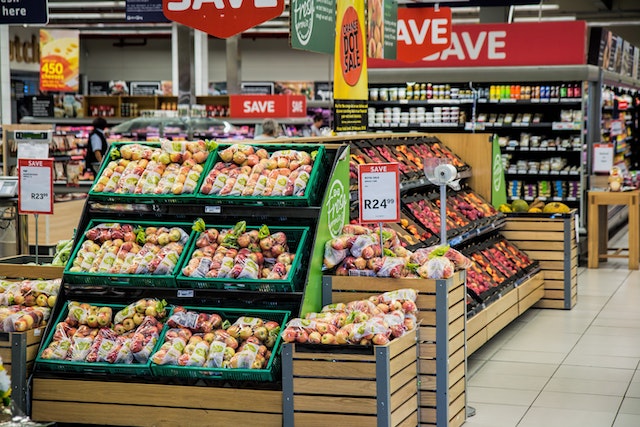Over the years, the consumer behavior is transitioning at a rapid pace. Today, buyers prefer having groceries on their doorstep rather than going to a brick-and-mortar store. As a result, online grocery delivery is experiencing an accelerating trajectory.
In a recent report by Statista, e-Grocery sales will account for more than 20% of total sales in the United States by 2026. In this post, we discuss the process of online grocery shopping and how you can start a lucrative business.
Online Grocery Shopping – Present and Future
With technological advancements, urbanization continues to grow, leading to a paradigm shift in the consumer’s shopping behavior. The preference for grocery shopping is more than previously, which is expected to rise.
The future of grocery shopping is expected to be shaped by speedy delivery and convenient shopping. As everyone wants more flexibility, variety, convenience, and the best of their limited time, online grocery delivery will continue to upsurge.
Around 70% of customers will buy groceries online as it gives them the comfort to shop for a range of products and get their items delivered quickly. Hence, it is the perfect time to begin your online grocery business and transform it into a reputed grocery shopping brand.
How Does the Online Grocery Deliver Process Works?
The online grocery delivery model is a simplified process involving the following steps:
- The customer places an order for groceries on the business app.
- The platform or store receives the order and alerts the nearest store to the shopper’s address. The store picks and packs the order.
- The app assigns a delivery partner.
- The delivery executive reaches the store to collect the order.
- The delivery executive collects the order and delivers the same to the customer.
- The customer pays money online, which is received by the business.
- The money is shared among the business, the store that provided the order, and the delivery executive.
How to Start Your Grocery Delivery Business?
Starting a grocery delivery business is challenging. But by properly following the below-mentioned steps, the process becomes quite easier.
1. Create a Flexible Business Model
While creating your business model, make sure it can be adjusted quickly according to the customers’ changing priorities. Adapt a model that matches the growing industry with innovative ideas and novel customer services.
For example, your business can capitalize on specialized grocery items or organic products to attract new clients and retain current buyers.
2. Get Yourself Registered
Another essential element for running a successful grocery business model is registering your company or business. You get a name, business form, and compliance with an authentic registration.
You must pay taxes on your online sales as an online business. Hence, it is essential to get your business registered to avoid witnessing any compliance issues.
3. Know Your Target Audience
You can target the market well if you know your customers. Your grocery service model must focus on meeting the needs of all types of people, including busy professionals, older people, people with disabilities, and others.
Partner with wholesale food distributors in your region to know about the target audience and get speedy delivery of products for your store. It will ensure you always stay in stock for products prevailing in your preferred region.
4. Plan a Robust Operating Model
Planning a working strategy or model for how your business will operate is best. Assess all vital factors that may impact the efficiency of your business, like web-based platforms, software, mobile apps, and more.
Also, assess your competitors’ tools to determine what you will require to meet your customer’s expectations.
5. Define Transparent Policies
Customers intend to make a well-informed decision when they shop online. Many want to know about their product package dimensions, nutritional facts, and quantity. They wish to decide on specific vegetables and fruits or need more educational details about every product before purchasing.
Hence, maintain absolute transparency on your portal to inform customers about everything before purchasing.
6. Make the Navigation Process Simpler
Make the navigation process simpler for customers, suppliers, merchants, and other parties with access levels for particular functions. Update upcoming deliveries in a separate section, with the option to reject or accept an order based on availability.
The sellers must access the system to view product availability, delivery schedules, and other required details to review and update the product offerings. Similarly, your company’s staff can access activity and sales reports, product reviews, inventory approval systems, and tax management resources.
7. Provide Efficient and Fast Deliveries
Most importantly, offer as quick and efficient deliveries as possible. Like people enjoy in-store shopping without delays, the online store must offer the same.
A few aspects that can help you deliver a seamless experience to your customers are selecting the items, shopping for them, and delivery. Create a systematic route to increase efficiency, particularly in big urban areas with many delivery quotes and customers.
Also, consider the number of trips, cost of fuel, driving time, and anticipated traffic delays while working on your business model.
8. Design a Buyer’s App and Delivery Driver’s App
Your buyer app must offer 24×7 accessibility. It must deliver pliable options that allow shoppers to purchase groceries anytime from the convenience of their homes and deliver them to a specific location within the delivery area. Include an array of functionalities and features in the app to deliver your customers a seamless shopping experience.
Additionally, introduce an app for the delivery driver with full-equipped features that support grocery delivery. It may include geo-location, order management, push notifications, wallet management, and supplement delivery staff with easy doorstep delivery.
The Revenue Model for Online Grocery Business
There are many ways to make your business profitable and scale it.
- Commissions – You can charge a commission for each transaction or every delivery. The commission charged on every transaction lets you earn according to the sales. The commission charges on each delivery charge the driver and buyer some amount on their delivery and purchase.
- Banner Ads or On-Site Promotion – Vendors can carry out personalized ads through schemes and banners on the homepage. The admin charges the sellers for space and the number of campaigns.
- Vendor Subscription Fees – In this case, the vendor must pay a fixed membership fee and use your service for a fixed duration, like bi-annually, quarterly, annually, and more.
How Much Does It Cost to Start an Online Grocery Delivery Business?
Cost is a vital factor in developing an online grocery business and on-demand grocery delivery apps. A major cost-driving factor is complexity. You need to add numerous features and functionalities to your app and its cost depends on the availability of geographical location and resources.
Atlantic Dominion Distributors – Your Trusted Partner to Launch an Online Grocery Business
Atlantic Dominion Distributors are leading food distributors in North Carolina, South Carolina, and Virginia. We offer services beyond distribution and can help you plan and set up a profitable grocery business from scratch. We offer store planning, personalized service, advanced technological insights, and order advice to let you run a fruitful grocery business. We can bring our 40 years of business experience to your store. Contact us today to fix an appointment.





